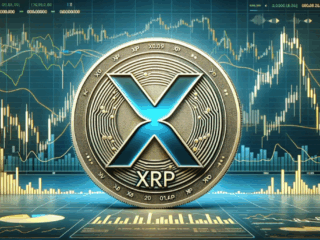Solana exceeds Ethereum’s market capitalization for the first time – this is not necessarily an advantage

- Solana briefly overtaken Ethereum in the market capitalization, but the high returns could affect defi growth and the benefits of the token.
- Ethereum is still safer, although the increasing dependence on Lido raises centralization problems.
Solana temporarily overtaken Ethereum in the market capitalization of the missions and thus triggered a heated debate whether this is a sign of growth or reveals weaknesses. On April 20, the total value of Solana exceeded that of Ethereum, according to Onchain data.
This is a cesurage, since Ethereum was the undisputed leader in the proof-of-stake validation. However, the consequences are not clearly evaluable. Some analysts consider the increase in SOL-Stakes as a sign of the trust of the users, while others argue that this reveals the limits of the development of the Solana system.
The strong price development of Solana – CNF reports – caused the shift. Sol has increased compared to ETH, with the SOL/ETH ratio almost tenfold since June 2023. As of April 20, the value of Solana reached $ 53.9 billion, which were secured by over 505,000 wallets. This value easily exceeded that of etherum with $ 53.93 billion, which is on 34.7 million ETH and over 1 million validers distributed .
Solanas Stakers currently benefit from an annual return of 8.31 % compared to 2.98 % in Ethereum. The higher return made staking on Solana more attractive and contributed to the rapid growth of the market capitalization of staking. However, this advantage has triggered concerns with some developers and researchers.
Trade-off between staking and defi activity
The problem with this high incentive is that it could lead to a decline in the Solana Defi activities if the return for staking is too high. In most cases, liquidity on the AMMS or rental platforms is less earned than with the insertion of such activities.
Tushar Jain from Multicoin Capital said on stage that the stacking returns lying above the defi returns demotivate more risky engagement. He had previously found:
“It is not rational for them to offer a SOL/USDC trade on an AMM if they receive 5 % while they get 7 % with staking.”
Ever wondered why rates on Solana DeFi are usually low?
The ecosystem might be fighting an uphill battle…
With staking rewards setting a high bar for returns, @Tusharjain_ argues a lower inflation rate would’ve made DeFi more attractive on SOL. pic.twitter.com/dqPUOAlccA
— Laura Shin (@laurashin) March 17, 2025
Defi activity remains strong on Ethereum. The network dominates with a total value of over $ 50.4 billion, which is blocked across all protocols, compared to $ 8.85 billion at Solana. Loud DefillEthereum has $ 21.5 billion in assets in liquid staking alone, while Solana only has $ 7.22 billion .
Inequalities in validators and security show structural gaps
In addition to the economic aspects, there are also differences in the number of validators in the networks and the security protocols that have been introduced. Ethereum now has over 1.06 million validators, which can also be considered very decentralized. In the meantime, Solana works with only 1,243 validists.
Critics have noted that Solana staking architecture only provides for minimal punishments for misconduct in relation to the resilience or the staking structure. In order to prevent abuse in Ethereum, validators have to lose part of their missions, which prevents bad actions. Slashing is not shown in this presentation, but is only through certain actions, such as: B. the restart of Solana.
Solana Labs argues that the company tackles this problem through the transition to automation. A planned “related slashing” would impose punishments to the validers if they allow their actions to violate a specific network standard and should be introduced this year.
In the meantime, Ethereum has its challenges. The requirement of up to 32 ETH for solo staking has forced the participants to choose liquid staking providers. With Lido, the market for liquid operations from Ethereum dominates 98 percent, which raises concerns about the centralization of the missions.








No Comments